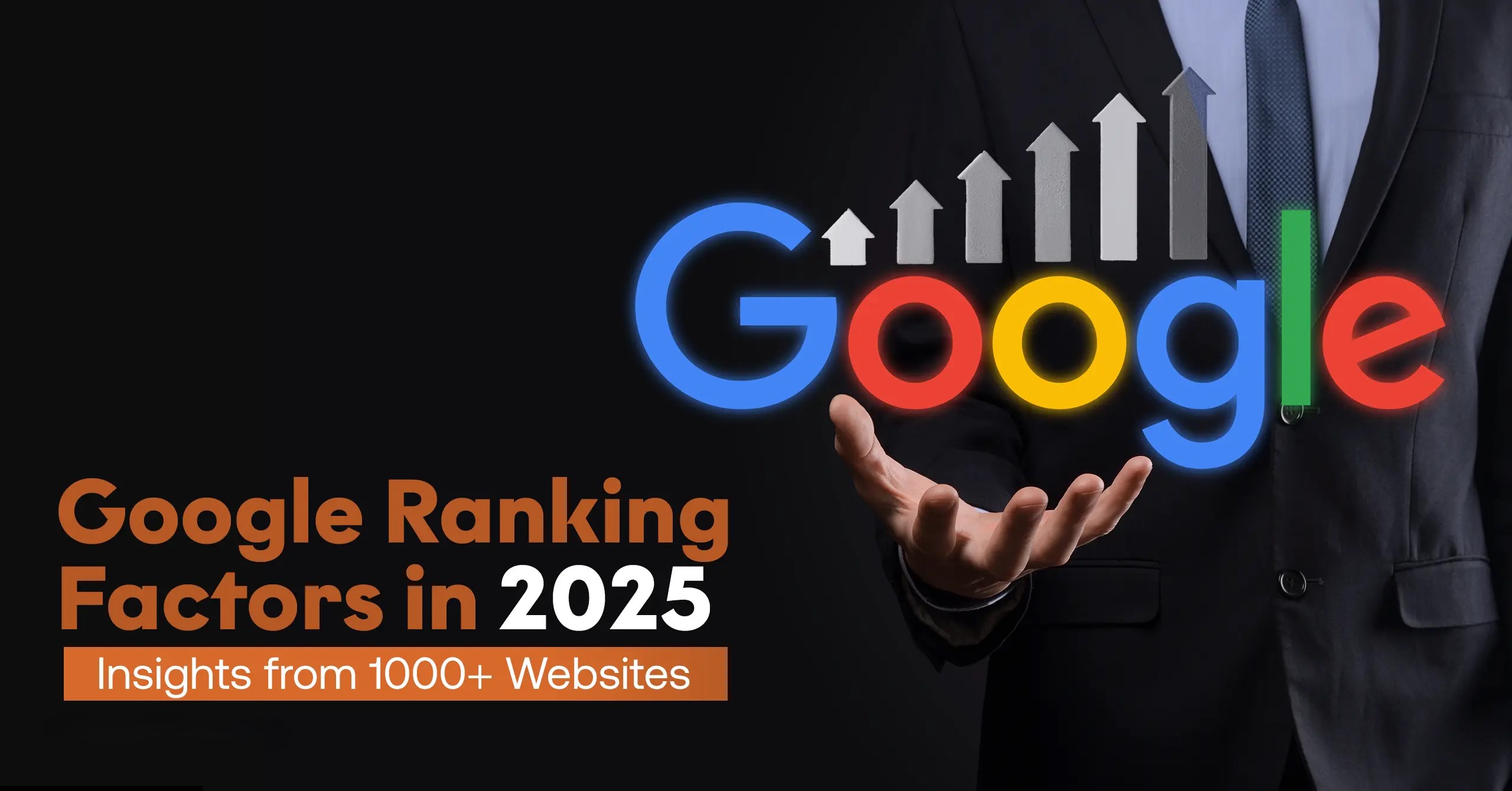
As of 2025, Google’s specific algorithm changes are proprietary, and the search giant doesn’t disclose a full list of its ranking factors. However, SEO experts and reputable organizations often analyze Google updates, patents, and real-world case studies to compile insights into ranking priorities, including Google’s Top Ranking Factors. Below is a list of key ranking factors for 2025, along with credible sources to back the information.
As we delve deeper into Google’s ranking factors, it’s essential to understand the implications these factors have on digital marketing strategies. Businesses focusing on these elements are more likely to achieve better visibility in search results, ultimately driving traffic and conversions.
1.1 The Role of User Feedback in Core Web Vitals
Moreover, optimizing for Core Web Vitals involves continuous testing and adjustments as technology and user expectations evolve. Tools like Google’s PageSpeed Insights can help identify areas for improvement, ensuring that page load times and interactivity are consistently ranked among the best.
User feedback mechanisms such as surveys and direct user testing can provide insights into performance issues that metrics alone may not reveal. For example, a website’s loading speed may seem adequate, but if users report frustrations, it’s vital to investigate further.
1. Core Web Vitals and Page Experience
Google’s continued emphasis on Core Web Vitals as part of its page experience signals has been reiterated through updates like “Page Experience Update” and subsequent AI advancements.
- Metrics such as LCP, FID, and CLS remain critical for providing a seamless user experience.
- Sources:
- Google Search Central: Core Web Vitals
- Search Engine Journal (SEJ): Core Web Vitals Guide
2. Content Quality and E-E-A-T
Google introduced E-E-A-T (Experience, Expertise, Authoritativeness, Trustworthiness) to emphasize high-quality content. Authorship, sourcing, and industry expertise are essential for ranking.
2.1 Enhancing Content with E-E-A-T Principles
Furthermore, showcasing authorship through author bio sections can enhance credibility, especially in sensitive niches where trust is paramount. By establishing expertise, businesses can foster user trust, leading to higher engagement rates.
Implementing E-E-A-T means going beyond technical writing. Incorporating real-world examples, research-backed statistics, and case studies enriches content quality significantly. For instance, a health-related article should not only present facts but also include references from credible medical sources.
- Sources:
- Google Search Quality Rater Guidelines: Google E-E-A-T Update
- Moz: E-E-A-T in SEO
3. Artificial Intelligence and MUM
Google’s MUM (Multitask Unified Model) has transformed search through its ability to process complex queries and integrate multi-modal inputs (text, images, video).
- Sources:
- Google AI Blog: About MUM
- SEMrush: MUM and SEO
3.1 Leveraging AI for Content Generation
For example, a blog post about healthy eating could benefit from MUM by including related videos or infographics that illustrate healthy meal prep techniques. This multi-modal approach keeps users engaged and satisfied with the content provided.
With MUM’s capabilities, marketers can explore innovative ways to create content that addresses complex user queries holistically. This means not just answering questions but also providing additional valuable insights, which can enhance the user experience.
4. Intent Optimization
Matching content to search intent—informational, transactional, etc.—remains a top priority for Google’s ranking algorithm.
- Sources:
- Ahrefs: Understanding Search Intent
- Search Engine Journal: SEO and Search Intent
5. Links and Authority
4.1 Search Intent and Content Mapping
For instance, someone searching for ‘how to fix a leaky faucet’ might be looking for DIY solutions, while another looking for ‘plumber near me’ has a transactional intent. Recognizing these nuances allows content creators to address these needs aptly.
Mapping content to specific search intents can be achieved by creating detailed personas and journey maps. Understanding what users seek at each stage can help tailor content effectively.
While the importance of links has shifted slightly, they remain a major ranking signal. Quality, relevance, and natural link profiles are prioritized over raw quantity.
- Sources:
- Backlinko: Link-Building Guide
- SEMrush: How Backlinks Impact SEO
6. Mobile-First Indexing
Google officially moved to mobile-first indexing in 2021, and in 2025, mobile usability remains critical for SEO.
- Sources:
- Google Search Central: Mobile-First Indexing
- HubSpot: Mobile SEO Techniques
5.1 Enhancing Link Quality with Content Marketing
Creating shareable content like infographics and research papers can naturally attract backlinks from reputable sources. Engaging in guest blogging in relevant niches also fosters link-building opportunities.
7. Entity-Based Search and Knowledge Graph
Google’s use of entities and its Knowledge Graph continues to shape how search queries are understood and ranked.
- Sources:
- WordStream: Entity-Based SEO
- SEMrush: Why Entities Matter
8. Local Search Ranking
6.1 Mobile Usability Testing
Additionally, utilizing responsive design ensures content is accessible on various screen sizes, improving rankings as Google continues to prioritize mobile-first indexing.
Regular mobile usability testing can help identify issues before they affect user experience. Tools such as BrowserStack enable developers to test websites across different devices.
The importance of local SEO is tied to the sophistication of Google Maps and its Local Search Algorithm.
- Sources:
- Moz: Local Search Ranking Factors
- BrightLocal: Local SEO Strategies
9. Visual, Voice, and Video Search
Advancements in Google Lens, YouTube SEO, and voice search optimization (per smart devices) reflect Google’s push for multi-modal experiences.
7.1 Entities and Semantic Search
Expanding content to cover related topics and leveraging schema markup can reinforce these connections, leading to better visibility in search results.
Understanding the semantic relationship between entities can improve how content is perceived by Google’s algorithms. For example, using synonyms and related terms can enhance content richness and relevance.
- Sources:
- Google Blog: Google Lens
- Search Engine Journal: Video SEO Tips
10. Social Signals and Branding
While not a direct ranking factor, social media activity impacts search visibility indirectly by driving traffic, engagement, and trust.
- Sources:
- Hootsuite: Social Media and SEO
- Ahrefs: Social Signals and SEO
8.1 Strategies for Local SEO
Furthermore, gathering reviews and testimonials can enhance local search rankings, as positive feedback builds credibility and trust among potential customers.
Local businesses can enhance visibility by leveraging Google My Business and ensuring accurate NAP (Name, Address, Phone) details across all platforms. Engaging with local customers through community events and sponsorships also boosts visibility.
11. Zero-Click Searches
Google’s direct answer boxes, Featured Snippets, and People Also Ask boxes continue to dominate SERPs, emphasizing the importance of structured, concise content.
- Sources:
- Search Engine Land: Zero-Click Searches
- Backlinko: Featured Snippets Guide
12. User Interaction Metrics
9.1 Optimizing for Voice Search
Creating FAQ sections that address common voice search queries can significantly improve chances of being featured in voice search results.
With the rise of voice-activated devices, optimizing content for voice search is essential. This involves focusing on natural language and question-based queries to match how users speak.
Behavioral signals like Click-Through Rate (CTR), Dwell Time, and Bounce Rate are increasingly important as indirect ranking factors.
- Sources:
- SEMrush: User Behavior and SEO
- Neil Patel: CTR and Rankings
Final Thoughts about
Google’s ranking factors for 2025 prioritize user-centric content, advanced technologies like AI/ML, and multi-modal search experiences. To succeed, focus on blending technical optimization, content quality, and user intent.
10.1 Building a Social Media Presence
Moreover, using social media analytics can provide insights into audience preferences, allowing for more tailored content strategies that resonate with users.
An active social media presence supports SEO by driving traffic back to the website and fostering engagement. Sharing relevant content and interacting with followers can enhance brand image and authority.
Let me know if you’d like deeper insights into any specific ranking factor!
Read More about SEO Topics
11.1 Strategies for Featured Snippets
Regularly updating high-performing content can also help maintain its relevance, increasing the likelihood of retaining snippet status as search trends evolve.
To optimize for zero-click searches, structure content clearly and use bullet points, numbered lists, and well-defined sections. This format increases the chances of being selected for featured snippets.
12.1 Monitoring User Interaction Metrics
Utilizing tools like Google Analytics can provide insights into user behavior, enabling marketers to adjust strategies based on actual user interactions rather than assumptions.
For example, if a page has a high bounce rate, it suggests that users are not finding the content engaging, prompting a re-evaluation and refinement of content strategy to improve retention.
Final Thoughts on Future SEO Strategies
As we move forward, staying updated on evolving SEO trends is vital. Engaging in continuous learning and adapting to changes can help businesses maintain their competitive edge. Effective SEO is not a one-time task but an ongoing process that requires dedication and strategic planning.

